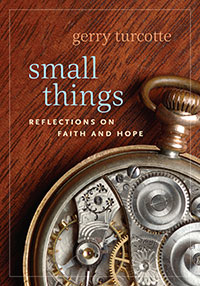
Ashes to Ashes
Go through the city, through Jerusalem, and put a mark on the foreheads of those who sigh and groan. (Ezekiel 9:4)
 On Bill Donaghy’s Twitter page, there appears a humorous graphic entitled “A Catholic Guide to Ashes.” It playfully displays a series of examples of the signs priests place on worshippers’ foreheads during Ash Wednesday services. These include a pristine cross labelled “First in Line,” a massive cross entitled “Father’s Revenge,” a messy little blur called “The Hasty,” and a barely-there impression that says, simply, “Load Toner.” I will leave it to you to imagine “The Hindu,” “The Mini,” “The Hipster” and the “Rorschach.”
On Bill Donaghy’s Twitter page, there appears a humorous graphic entitled “A Catholic Guide to Ashes.” It playfully displays a series of examples of the signs priests place on worshippers’ foreheads during Ash Wednesday services. These include a pristine cross labelled “First in Line,” a massive cross entitled “Father’s Revenge,” a messy little blur called “The Hasty,” and a barely-there impression that says, simply, “Load Toner.” I will leave it to you to imagine “The Hindu,” “The Mini,” “The Hipster” and the “Rorschach.”
Over the years, I have had any number of queries from non-Christians about the messy smudge on my forehead; like many people, I suspect, my explanation has ranged from the cryptic to the comic. But, as with so many things, I have never really sat down to understand where this tradition came from. In the Bible, references to ashes are plentiful, though the most famous such example, “ashes to ashes, dust to dust,” only appears in The Book of Common Prayer.
The application of ashes to foreheads has been a common practice for over 1,200 years, marking the dies cinerum or “day of ashes.” The Gregorian Sacramentary, dating back to the eighth century, refers to this practice where the faithful are marked with ashes derived from the burning of the previous year’s palms. Typically, the practice is linked to the idea of penance. And even though Ash Wednesday is not mentioned in the Bible, there are nevertheless over 40 references to ashes in connection with the practice of mourning and penance. As Job tells us, “therefore I despise myself, and repent in dust and ashes” (42:6).
For me, Ash Wednesday was always connected to fasting, since it marked the beginning of Lent. It was a strangely popular time to gather for Mass, even though it wasn’t a holy day of obligation. Even as a school-aged child, I found the ritual meaningful, and once I even replicated the practice by dipping my hand in the long-dead remains of a fire in our fireplace. To say my parents weren’t impressed with the resulting charcoal carnage that covered not just my forehead but every article of clothing I was wearing would be an understatement. In my heart of hearts, however, it seemed like the right thing to do. And perhaps my seriousness was appropriate, because that’s what Ash Wednesday is about. It’s about acknowledging our Lord and preparing for a sombre 40-day journey towards Easter, where our hope, through the resurrection, inevitably rises from the ashes.
-An excerpt from Gerry Turcotte’s book Small Things: Reflections on Faith and Hope published this spring by Novalis. Order your copy today and be moved by Turcotte’s deeply inspiring reflections.


